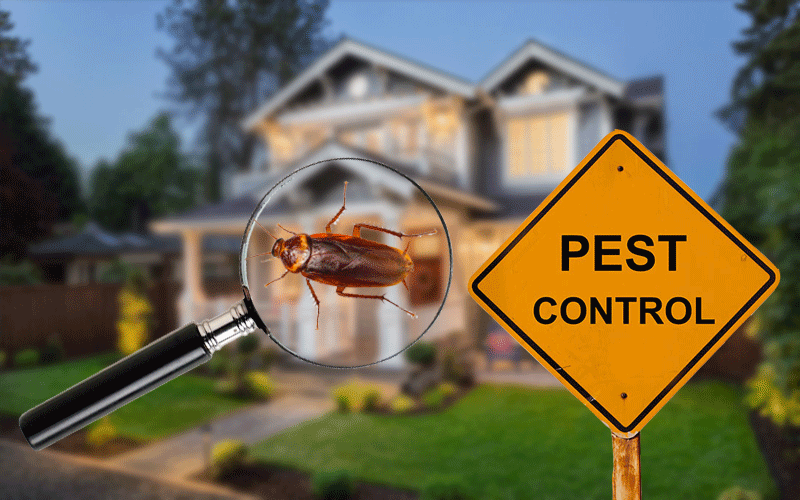Quality A1 Pest Control Services Charlotte - Protect Your Home
Quality A1 Pest Control Services Charlotte - Protect Your Home
Blog Article
Bed Pest Therapy Malfunction: Comparing Chemical Vs. Non-Chemical Solutions
In the realm of bug control, specifically when handling the relentless concern of bed pests, the option in between chemical and non-chemical treatment remedies can be a pivotal one. Both strategies use unique advantages and downsides, affecting factors such as performance, safety and security factors to consider, and overall expense. By checking out the nuanced information of each method, a more clear understanding of which course to go after in resolving a bed insect problem can be achieved.
Effectiveness of Chemical Treatments
Chemical treatments for bed insect infestations have been extensively acknowledged for their fast and potent efficiency in getting rid of these pests. When thinking about the effectiveness of chemical treatments, it is crucial to recognize that they can provide a fast and extensive solution to a bed insect problem.
Furthermore, chemical therapies have the benefit of supplying residual results, suggesting that they can continue to eliminate bed insects also after the preliminary application. This recurring activity is specifically helpful in combating any kind of prospective re-infestations. In addition, the fast action of chemical therapies can bring relief to people encountering extreme bed pest invasions, enabling them to reclaim control of their space promptly.
Safety And Security Worry About Chemical Solutions
One crucial aspect that requires mindful consideration when utilizing chemical solutions for bed pest therapy is guaranteeing the security of residents and the environment. While chemical treatments can be effective in eliminating bed pests, they might present threats if not dealt with correctly. One of the key security interest in chemical services is the possible damage they can trigger to human health and wellness. Direct exposure to certain chemicals utilized in bed pest treatments can result in respiratory system concerns, skin irritation, or various other damaging responses, particularly in individuals with pre-existing problems or level of sensitivities. In addition, incorrect application or dosage of chemical pesticides can cause hazardous residues sticking around in the cured location, posturing lasting wellness threats to passengers.
Moreover, the ecological impact of chemical services is an additional significant factor to consider. Some chemicals made use of in bed insect therapies may be harmful to beneficial pests, wildlife, and communities if they leach right into the soil or water systems. It is crucial to make use of chemical therapies deliberately, following safety standards, and thinking about much less hazardous options to mitigate these threats and guarantee the safe and efficient management of bed pest invasions.
Benefits of Non-Chemical Strategies
Thinking about the potential safety issues and ecological influence connected with chemical remedies for bed bug treatment, discovering non-chemical strategies provides an appealing alternative with several unique benefits. Non-chemical treatments are eco pleasant, as they do not add to air or water air pollution, making them a sustainable selection for bug control.
Additionally, non-chemical solutions can be efficient in targeting bed bugs, consisting of hard-to-reach areas where chemical treatments might not penetrate - A1 bed bug exterminator charlotte. Methods such as heat therapy, vacuuming, steam cleansing, and mattress encasements supply complete eradication without the use of dangerous chemicals.
Limitations of Non-Chemical Treatments

Furthermore, non-chemical treatments usually need multiple applications to achieve successful obliteration. This can be time-consuming and may not always assure full elimination of all bed bugs and their eggs, particularly in hard-to-reach or hidden locations.
Moreover, the success of non-chemical therapies heavily counts on correct implementation and thoroughness, which can be testing for people without professional proficiency. Insufficient application of non-chemical techniques might result in incomplete elimination, bring about consistent problems and the demand for added treatments.
As a result, while non-chemical therapies have their benefits, it is vital to acknowledge these restrictions and consider them when determining the most effective strategy for managing bed insect infestations.
Expense Comparison: Chemical Vs. Non-Chemical Options
Offered the restrictions connected with non-chemical treatments, an essential element to evaluate in the context of bed pest management is the price contrast between chemical and non-chemical options. Chemical therapies usually entail the application of insecticides by professionals, which can vary from $250 to $900 per space, depending upon the seriousness of the invasion and the dimension of the location to be treated. In comparison, non-chemical treatments like heat treatment or vapor can be extra costly, with prices varying from $1,000 to $6,000 for a whole home. While the first price of chemical over here therapies may seem reduced, several treatments might be called for to totally eradicate the infestation, potentially boosting the total price. On the various other hand, non-chemical choices may give a more sustainable and green solution, although they can be cost-prohibitive for some people. Inevitably, when taking into consideration the cost of bed bug treatment alternatives, it is important to consider the ahead of time expenses versus the effectiveness and lasting sustainability of the go to this site chosen approach.
Final Thought

Taking into consideration the potential security worries and environmental influence connected with chemical services for bed pest treatment, exploring non-chemical methods offers a promising alternative with several unique advantages.Provided the limitations linked with non-chemical treatments, an essential element to examine in the context of bed insect monitoring is the expense contrast between chemical and non-chemical choices. In comparison, non-chemical treatments like warmth treatment or heavy steam can be extra pricey, with prices varying from $1,000 to $6,000 for an entire home. While the preliminary price of chemical therapies may seem lower, multiple treatments might be called for to fully eradicate the problem, potentially enhancing the overall expense.In final thought, when contrasting chemical and non-chemical bed insect treatment options, it is essential more to take into consideration effectiveness, safety and security, advantages, constraints, and cost.
Report this page